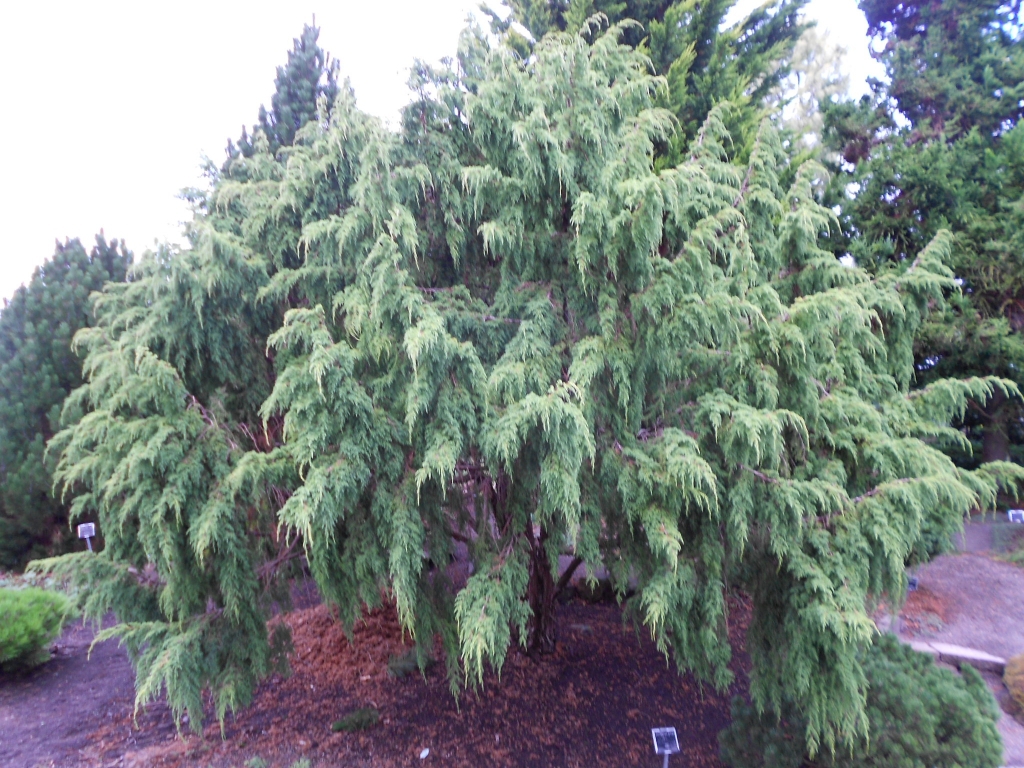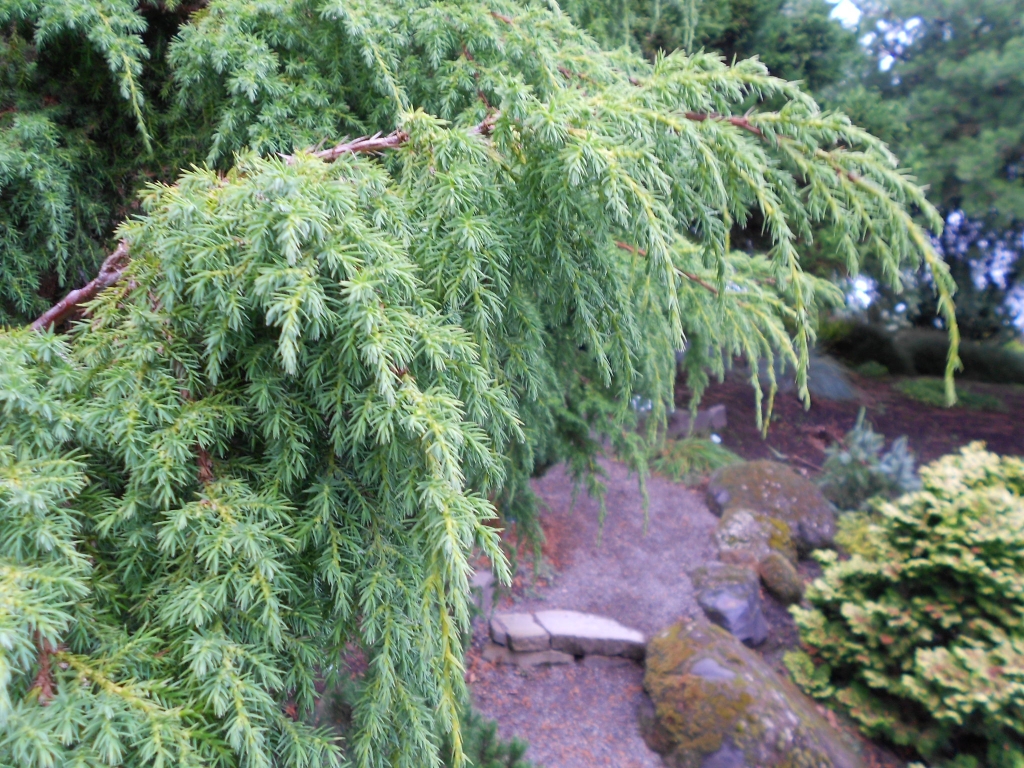Juniperus pingii (Ping's juniper) as described in 1944 by Wan Chun Cheng, ex Yvette de Ferré in Bulletin de la Société d' Histoire Naturelle de Toulouse, vol. 79 is commonly known as Ping's juniper; as well as C会指Š‘白 (C huì zhÇxià ng bái) in the Chinese language.
According to Aljos Farjon (2005), three varieties of this species are known to exist:
Description. Ping's juniper is a monoecious, procumbent to erect shrubby evergreen, coniferous species of tree that grows to mature heights of 12 to 30 feet (4 - 9 m) tall with a trunk up to 12 inches (30 cm) in diameter. One must note that individual specimens can vary greatly in structure.
It should be noted that Juniperus pingii has been subject to much discussion regarding name changes and its relationship with its close relatives, Juniperus recurva and Juniperus squamata. Many cultivars long associated with Juniperus squamata are now assigned to pingii.
Distribution. This species is found growing at an elevations of 7,800 to 14,000 feet (2,500 - 4,400 m) above sea level in the mountains of central and southwestern China. Ping's juniper is typically found in subalpine forests and in scrubby alpine areas.
Hardy to USDA Zone 6 - cold hardiness limit between -10° and 0°F (-23.2° and -17.8°C).

